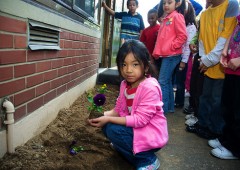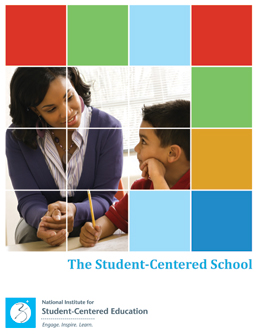MINDFULNESS
A recent article in the March 15, 2013 Huffington Post says “some schools have started incorporating mindfulness programs into their curriculums, teaching kids as young as five years old how to use body scans, mindful breathing and attention to their thoughts and emotions to become more focused.” NEARI is one of those schools.
More and more teachers are introducing contemplative or mindfulness-based practices into their classrooms. By using these approaches every day, they are setting a routine that supports self-regulation and creates a positive emotional climate.
MINDFULNESS IN LEARNING
 In addition, much research suggests that regular mindful practices alter how our bodies and brains respond to stressful experiences. These practices strengthen connections in the prefrontal cortex and reduce reactivity in our limbic system, which in turn enhances calm and focus. These functions can play an important role in learning. To learn, a student must engage his/her prefrontal cortex to activate executive functioning skills. This includes being able to focus, shift attention, organize incoming data, and inhibit impulsive behaviors.
In addition, much research suggests that regular mindful practices alter how our bodies and brains respond to stressful experiences. These practices strengthen connections in the prefrontal cortex and reduce reactivity in our limbic system, which in turn enhances calm and focus. These functions can play an important role in learning. To learn, a student must engage his/her prefrontal cortex to activate executive functioning skills. This includes being able to focus, shift attention, organize incoming data, and inhibit impulsive behaviors.
Many children come to school with nervous systems that are unprepared to learn. They overreact to change, they have trouble organizing assignments or responding to the simplest instructions, and they often cannot attend for more than a few minutes (or seconds!).
Our modern lifestyle–with less than adequate nutrition and hydration for many students, daily doses of violent imagery, constant media exposure, the frantic pace of daily life, and the high pressure to perform whether as part of competitive recreational activities or on a state test–creates anxious, reactive minds and bodies. As we now know, neuroplasticity allows us to make profound changes in the ways our bodies and minds function at any age, but especially during development. So helping students learn to calm themselves through the use of developmentally appropriate mindfulness practices can make a significant difference in individual functioning and self-esteem.
MINDFULNESS IN PRACTICE
Our research at NEARI has led us to the following mindfulness practices with our students:
- Yoga poses at the beginning of class.

- Striking a gong to settle the class down.
- Silent observation of an animal or flower. Silent work at one’s desk.
- Cross pattern walking to move from hall to desk.
- Group breathing exercises to join the community together.
- Brain gym ‘hook ups’ to calm and focus active brains. (See Brain Gym exercises.)
- Listening to quiet classical music while sitting silently.
- Group wall lean at the end of class (body turned sideways, one arm on the wall, the other on the hip, head turned away from the wall) as the teacher wraps up the lesson to promote body awareness and provide calming pressure.
- Monitoring of heart rate before and after physical activity to increase awareness of how our body reacts to movement.
- Progressive muscle relaxation, the practice of tightening and relaxing muscle groups while breathing, in order to help students recognize the difference between tense and relaxed muscle/energy states.
- Different teachers might use different practices, but each is designed to refocus and calm. We are finding that often students miss the mindfulness routine if it is skipped on a given day or they might ask to lead the exercise.
These mindfulness rituals are ‘catching.’ They need not take more than a few minutes at the beginning and end of the period. They may slightly reduce time on teaching but the quality of learning is enhanced. They settle active minds, bring the community together, shift the focus to the activity at hand, and lower the energy level. The hope is that students will begin to use these tools on their own as they shift from one activity to another and manage their energy throughout the day.
There are many different mindfulness practices teachers can use. Just know, as a recent article in Psychology Today points out, you don’t have to have an “empty mind,” chant, sit straight up with legs crossed on a pillow, wear special clothing, or have an hour to practice mindfulness correctly. What you need is three minutes and a ritual for all that is implemented mindfully.
OMMMMMM

Leave a Reply
You must be logged in to post a comment.